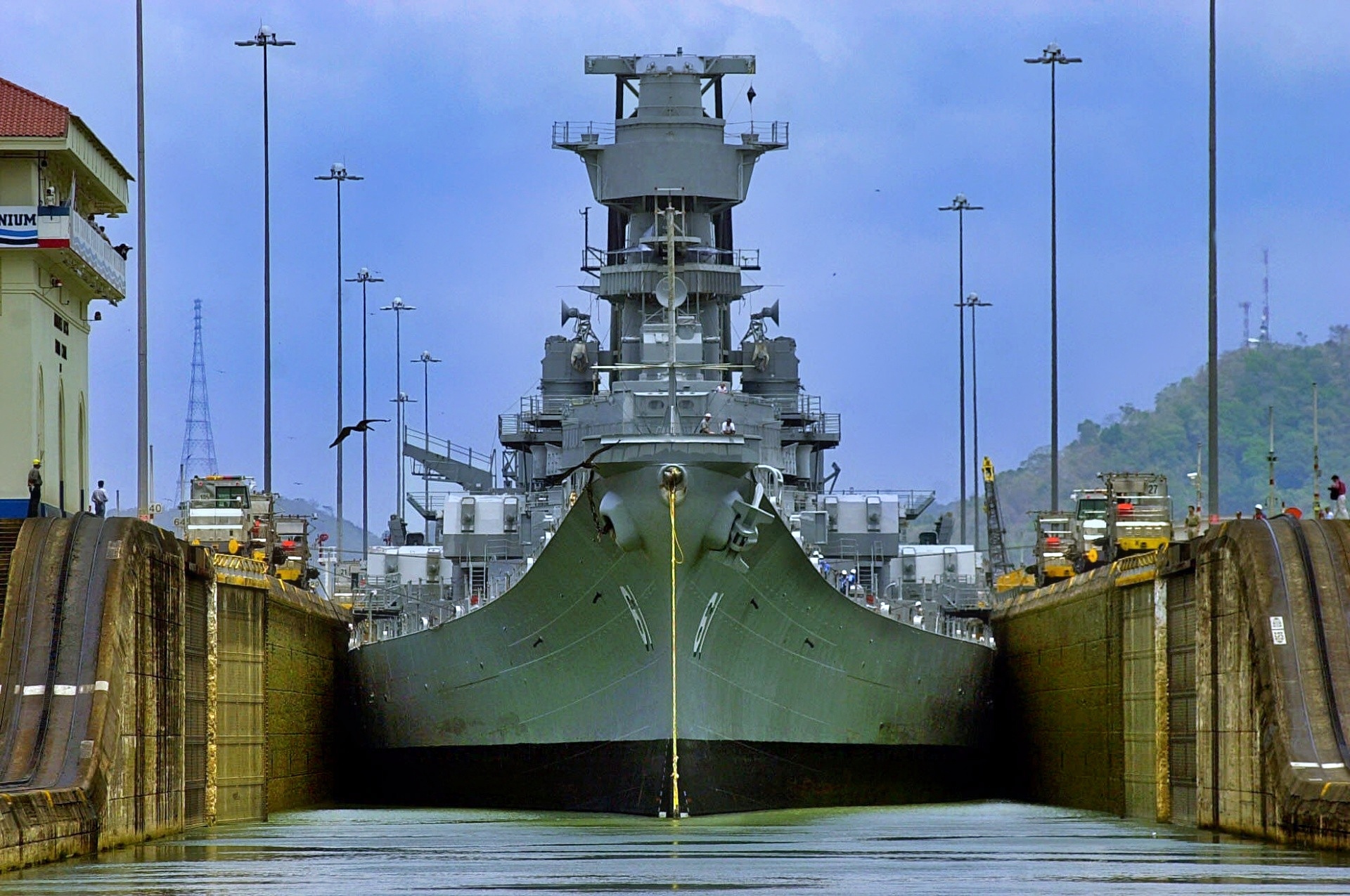The USS Iowa was the lead ship of the U.S. Navy’s Iowa-class battleships, a group of four warships built by the United States during World War II. They were explicitly designed to counter the increasingly swift, fast battleships in service with the Imperial Japanese Navy, as well as to protect aircraft carriers and their strike groups.
To that end, the Iowa-class combined hefty firepower, robust armor protection, and a high top speed.
Origins of USS Iowa Battleship
The Iowa-class battleships were a response to advances in capital ships during the late 1930s and 1940s that saw increases in both speed and firepower. Compared to the previous South Dakota-class battleships, which placed a premium on improving armor protection and were, by comparison, slower and smaller, the Iowa class could sprint at a rapid 33-knot speed and keep up with some of the fastest ships of their era while also boasting formidable firepower.
Japan’s Yamato-class battleships were the Iowa’s primary opponents, ship-for-ship — and were the largest, most heavily armed battleships ever built by any navy in the world. Compared to those ships, the Iowa-class sported less armor protection, and their 16-inch guns were of a smaller diameter than the Yamato’s 18.1-inch guns.
However, the Iowa-class had an edge over their larger opponents.
They were faster and were equipped with a much more advanced fire control system than the Yamoto-class battleships, giving them better accuracy than the Japanese warships during surface engagements. And though somewhat smaller, the Iowa’s 16-inch guns were extremely powerful.
The 16-Inch Guns
The USS Iowa’s main armament was nine 16-inch naval guns mounted in three turrets sporting three guns each. These guns could hit targets over 20 miles away. There were three different shells made for the guns: armor-piercing, high-explosive, and nuclear.
The Iowa’s armor-piercing shells were designed to penetrate even heavily armored ships as well as fortifications on land and tipped the scales at about 2,700 pounds each — more than a typical SUV. High-explosive shells were used for supporting amphibious landings and troops on shore as well as against structures on land. On land, the high-explosive shells made a crater approximately 50 feet wide and 20 feet deep. They could also be put to use against enemy troop concentrations or against more lightly armored ships.
Lastly, the Iowa-class could fire W23 nuclear shells, which were developed during the Cold War. Each shell’s nuclear yield is estimated at 15 to 20 kilotons, roughly within the range of the Fat Man and Little Boy atomic bombs dropped on Japan during the Second World War. Though never used in combat, the W23 shells were the U.S. Navy’s effort to give themselves a role within the United States nuclear deterrent capabilities.
As a secondary armament, the Iowa-class also sported 20 5-inch dual-purpose guns, which could engage enemy aircraft and surface vessels, though the ship’s specific armaments changed throughout its long service with the U.S. Navy and late in the Cold War included Phalanx Close-In Weapon Systems, Tomahawk cruise missiles and Harpoon anti-ship weapons.
Second World War
The U.S. Navy commissioned the USS in 1943 when it initially served in the Atlantic. The ship ferried President Franklin D. Roosevelt to the Tehran Conference in Iran. The ship later deployed to the Pacific and participated in several campaigns, including at the Marshall Islands, the Battle of Leyte Gulf, and the bombardment of Iwo Jima and Okinawa.
It also played a role in the last bombardments against Japan before the country’s surrender in 1945.
Korean War Reactivation of Iowa-Class
After the Second World War, the USS Iowa was moved to reserve status following post-war drawdowns but was reactive by the U.S. Navy in 1951 as part of the United States’ involvement in the Korean War, where it used its 16-inch guns to batter North Korean positions along the coast. Post-war, the USS Iowa was decommissioned again in 1958.
1982 Reactivation: the 600-ship Navy
In the early 1980s, President Ronald Reagan wanted to expand the United States Navy as part of his Cold War “peace through strength” foreign policy and deterrence against the Soviet Union. To that end, Regan sought to build and maintain a 600-ship navy, and in 1984, after extensive modernization, the USS Iowa was recommissioned.
As part of that modernization, the ship was equipped with Tomahawk cruise missiles, Harpoon anti-ship missiles, and modern electronic warfare systems while also retaining its nine 16-inch main guns.
1989 Turret Explosion and Investigation of USS Iowa
On April 19, 1989, an in the Iowa’s number two turret during a gunnery exercise killed 47 sailors and damaged the ship. Initially, the U.S. Navy concluded that the explosion was deliberately caused by one of the USS Iowa’s sailors.
However, a later independent investigation conducted jointly by Sandia National Laboratories and the Government Accountability Office concluded that the explosion was most likely caused by overpressure while loading the gun’s gunpowder bags.
A second investigation by the U.S. Navy in 1991 resulted in enhanced training for gunnery crews and a focus on safety. It acknowledged that the first investigation had come to an inaccurate conclusion.
Thanks to the turret explosion, the U.S. Navy decided to decommission the ship in 1990, just before the beginning of the Gulf War.
As a result, it did not join its sister ships, the USS Missouri and USS Wisconsin, during Operation Desert Storm in 1991. It is now a museum ship in San Pedro, California.
About the Author: Caleb Larson
Caleb Larson is an American multiformat journalist based in Berlin, Germany. His work covers the intersection of conflict and society, focusing on American foreign policy and European security. He has reported from Germany, Russia, and the United States. Most recently, he covered the war in Ukraine, reporting extensively on the war’s shifting battle lines from Donbas and writing on the war’s civilian and humanitarian toll. Previously, he worked as a Defense Reporter for POLITICO Europe. You can follow his latest work on X.

